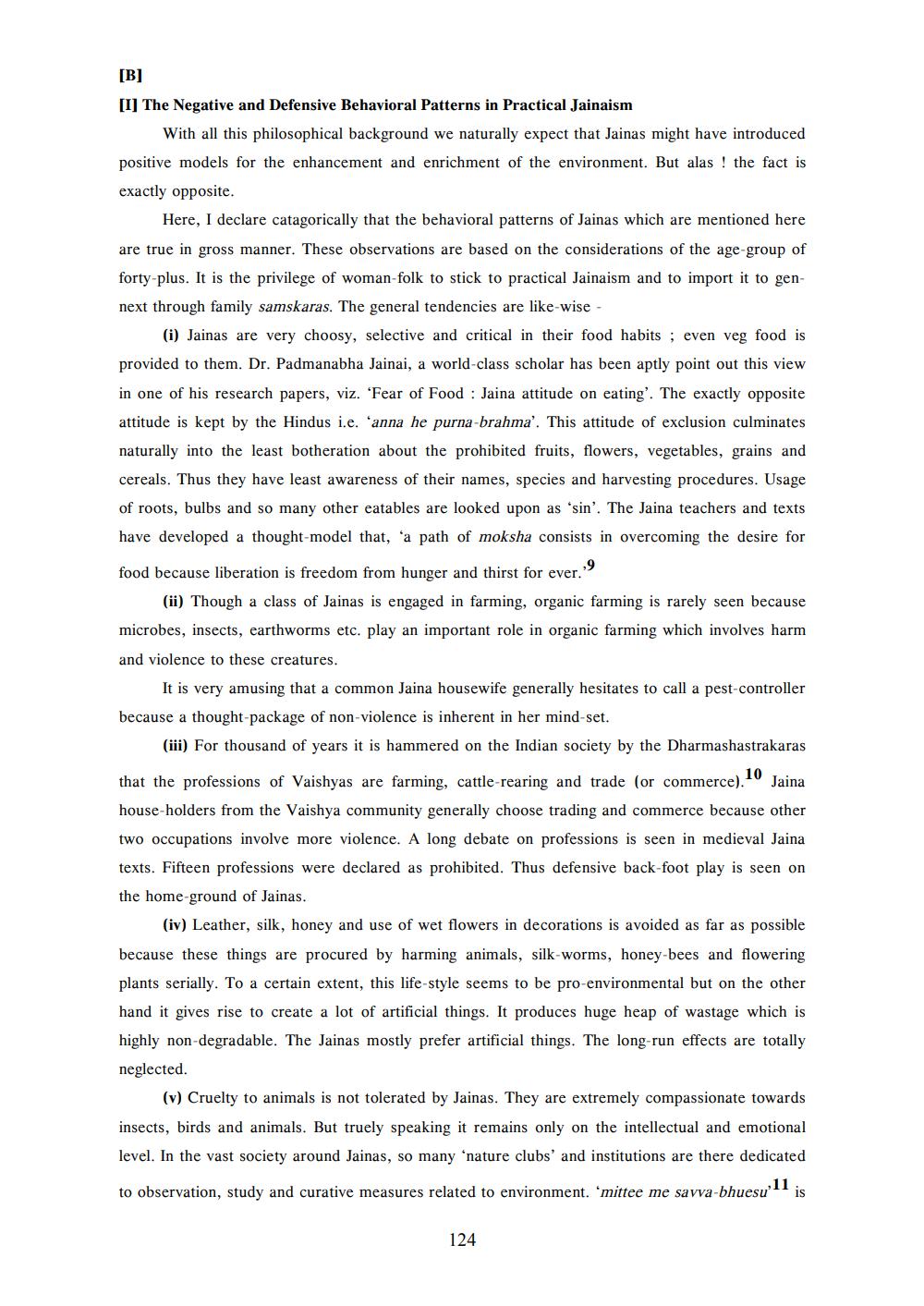________________
[B]
[I] The Negative and Defensive Behavioral Patterns in Practical Jainaism
With all this philosophical background we naturally expect that Jainas might have introduced positive models for the enhancement and enrichment of the environment. But alas ! the fact is exactly opposite.
Here, I declare catagorically that the behavioral patterns of Jainas which are mentioned here are true in gross manner. These observations are based on the considerations of the age-group of forty-plus. It is the privilege of woman-folk to stick to practical Jainaism and to import it to gennext through family samskaras. The general tendencies are like-wise -
(i) Jainas are very choosy, selective and critical in their food habits ; even veg food is provided to them. Dr. Padmanabha Jainai, a world-class scholar has been aptly point out this view in one of his research papers, viz. 'Fear of Food : Jaina attitude on eating'. The exactly opposite attitude is kept by the Hindus i.e. 'anna he purna-brahma'. This attitude of exclusion culminates naturally into the least botheration about the prohibited fruits, flowers, vegetables, grains and cereals. Thus they have least awareness of their names, species and harvesting procedures. Usage of roots, bulbs and so many other eatables are looked upon as 'sin'. The Jaina teachers and texts have developed a thought-model that, 'a path of moksha consists in overcoming the desire for
food because liberation is freedom from hunger and thirst for ever.
(ii) Though a class of Jainas is engaged in farming, organic farming is rarely seen because microbes, insects, earthworms etc. play an important role in organic farming which involves harm and violence to these creatures.
It is very amusing that a common Jaina housewife generally hesitates to call a pest-controller because a thought-package of non-violence is inherent in her mind-set.
(iii) For thousand of years it is hammered on the Indian society by the Dharmashastrakaras
that the professions of Vaishyas are farming, cattle-rearing and trade (or commerce)." Jaina house-holders from the Vaishya community generally choose trading and commerce because other two occupations involve more violence. A long debate on professions is seen in medieval Jaina texts. Fifteen professions were declared as prohibited. Thus defensive back-foot play is seen on the home-ground of Jainas.
(iv) Leather, silk, honey and use of wet flowers in decorations is avoided as far as possible because these things are procured by harming animals, silk-worms, honey-bees and flowering plants serially. To a certain extent, this life-style seems to be pro-environmental but on the other hand it gives rise to create a lot of artificial things. It produces huge heap of wastage which is highly non-degradable. The Jainas mostly prefer artificial things. The long-run effects are totally neglected.
(v) Cruelty to animals is not tolerated by Jainas. They are extremely compassionate towards insects, birds and animals. But truely speaking it remains only on the intellectual and emotional level. In the vast society around Jainas, so many nature clubs' and institutions are there dedicated
to observation, study and curative measures related to environment. 'mittee me savva-bhuesu" is
124




